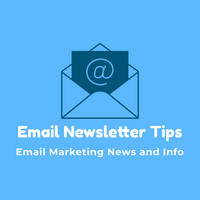Creating and sending an HTML email newsletter may sound like a daunting task, but with the right tools and guidance, you can easily craft engaging emails that stand out in your subscribers’ inboxes. Whether you’re a small business owner, a blogger, or simply someone who wants to share updates with a group of people, this step-by-step guide will help you navigate the world of email marketing with ease.
First things first, you’ll need an email marketing service provider. There are many options available, such as Mailchimp, Constant Contact, or ConvertKit, that offer user-friendly interfaces for creating and sending newsletters. Sign up for an account with one of these platforms to get started.
Once you’re logged into your email marketing account, it’s time to create your newsletter. Start by choosing a template that suits your needs. Most email marketing services offer a variety of templates to choose from, ranging from simple designs to more elaborate layouts. Select a template that aligns with your brand and the message you want to convey.
Now comes the fun part – customizing your newsletter! Add your logo, images, and text to the template to make it your own. Remember to keep your design clean and easy to read. Include eye-catching visuals and compelling copy to capture your subscribers’ attention.
When it comes to the content of your newsletter, think about what value you can provide to your readers. Share updates, promotions, tips, or any other information that will resonate with your audience. Keep your message concise and to the point, and always include a clear call to action to encourage engagement.
Once you’re happy with the design and content of your newsletter, it’s time to test it. Most email marketing platforms offer a preview feature that allows you to see how your newsletter will appear to recipients. Take this opportunity to review your newsletter for any errors or formatting issues before sending it out.
Now, the moment you’ve been waiting for – sending your newsletter! Before hitting that send button, make sure to segment your audience if needed. You can group subscribers based on their interests, location, or any other criteria to send targeted messages that are more relevant to them.
After sending your newsletter, don’t forget to track its performance. Most email marketing platforms provide analytics that allow you to see open rates, click-through rates, and other valuable data. Use this information to optimize future newsletters and improve your email marketing strategy.
In conclusion, creating and sending an HTML email newsletter doesn’t have to be complicated. With the right tools and a little creativity, you can craft newsletters that engage your subscribers and drive results. So, roll up your sleeves, get creative, and start sending those newsletters!
